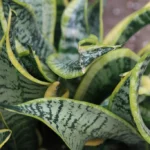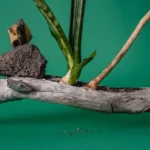Table of Contents
Introduction
There is a new Aloe Vera hybrid called White Lightening which is pure white, with some green stripes, and new varieties are being grown constantly by the professionals and sometimes the home gardener.
Aloe White Beauty is a hybrid succulent variant of the White Aloe Vera Plant.
It is excellent in arid landscapes as it does not require much watering, just once a week in hot weather.
Aloe VeraPlants can also turn pure white due to too much exposure to the sun. Now that we know there is a white Aloe Vera plant, we can look at how it came about.
How to Care for Your White Aloe Vera Plant
The Aloe Plants all originated in Africa, and at first, were collected and grown in home gardens.
The properties of the Aloe Vera plant became recognized by the pharmaceutical companies in treating a variety of diseases from skin complaints ( sunburn) to digestive complaints.
Light and Temperature Requirements
Your White Aloe Vera plant is a tropical plant, if you don’t live in the tropics it should be grown indoors. The plant requires minimal water and weekly watering even in Summer is considered enough for it.
During Winter it can be watered even less as too much water will cause the plant to rot.
If you are growing your plant outside it will tolerate full sun. In Summer your Aloe Hybrid White Beauty will have bright orange blooms.
Soil and Humidity Requirements
Your Aloe Vera plant can be planted outside or in a rockery, the warmth of the rocks will replicate the arid landscapes it came from in Africa.
Soil should be well-drained, and your plant will tolerate humidity. It can also be used in a terrarium.
Fertilizer
Use a liquid fertilizer or a fertilizer designed for succulents. There are about ten different varieties of the White Aloe Vera plant and they all respond to the same fertilizers.
The day before you fertilize your plant, water thoroughly before the fertilizer, as you don’t want the tips of the plant to burn.
Aloe Vera plants are not heavy feeders and are another plant that will respond well to Epsom salts, as it is full of minerals. but don’t overdo it. Once every season is enough for the Epsom salts treatment, that is x4 a year maximum.
Watering Your Aloe Vera
The plant should not be overwatered, as this causes the leaves to develop spots. If you have your plants in pots press your index finger down into the soil, and only water if the soil is still dry. Never water more than once a week.
Pests and Diseases
Nothing much is going to attack your Aloe Vera Plant. You may get some mealybug, but this is not common in an Aloe Vera Plant, if this happens use soapy water to remove it. The main problems with Aloe Vera are rot caused by overwatering.
Usually, the plant is as tough as nails and will continue to grow without intervention.
Propagation
New growth on the plant will be able to be planted and grown, as it is considered another plant or offset, clones that grow from the stem or roots of the plant. These offsets are produced when the plant is 2-3 years old, and are easily grown.
- Divide the new plant off the old plant, it will be on the stem.
- Do it in the growing season, late Spring and Summer
- Use a sharp clean knife
- A pot with potting mix to put the new plant into
- You may need rooting hormone if you damage the roots.
- Keep the new planting dry for a few days.
Medicinal Uses of Aloe Vera
The medicinal properties of Aloe Vera are many, it does contain healthy plant compounds.
- Contains antibacterial and antioxidant properties.
- Accelerates wound healing, especially coral cuts, and tropical wounds.
- Reduces plaque on teeth.
- Reduces constipation
- Lowers blood sugar
- Reduces inflammation especially in the digestive system
- Reduces the pain of burns and promotes healing.
The gel and skin of the plant can actually be eaten raw, and a lot of the health benefits may be in the gel. Wash it thoroughly before ingesting as it is covered in latex, and that gives it an unpleasant and bitter flavor.
Don’t consume it every day as the latex can cause kidney damage, and before you consume aloe gel, we need to know that the latex has been properly removed, and you can’t be sure of that.
If you are going to ingest Aloe Vera it may be better to purchase an extract from a Health Food Store.
The Aloe Vera Plant May Offer Health Benefits to Men
Men can use the Aloe Vera gel on their faces when shaving, as it reduces razor burn and rashes. It is also safe to use as a lubricant and helps to heal any genital wounds.
( NSW Health says: Perform a patch test before using to be sure that you are not allergic to the gel).
It can also be used to treat inflammatory skin conditions like acne, it will soothe the area.
If you want to consume Aloe Vera orally, buy and Aloe Vera juice, if used to treat constipation don’t have too much as it may have a laxative effect.
Harvesting Your White Aloe Vera Plant
- Harvest a mature plant a few years old, this ensures a concentration of active ingredients.
- Remove 3-4 leaves at a time
- Make sure the leaves are healthy
- Cut close to the stem
- Avoid roots
- Wash and dry leaves.
- Use a knife to separate the interior gel from the leaf, as this is what you will use.
- Allow the yellow sap to drain away, this is the latex, dispose of it.
- Cut the aloe gel into slices.
- Put it through the blender and strain out the pulp
- You will then have gel.
Conclusion
Your Aloe Vera Plant is not only ornamental but has a lot of benefits and uses. A White Aloe Vera plant will be a great addition to your rockery or indoor pots and can be harvested just like the other aloe vera plants.
Photo by Jessica Lewis on Unsplash



